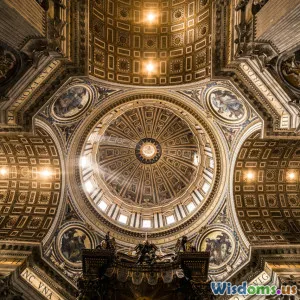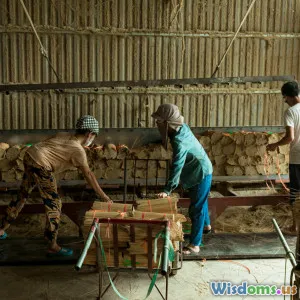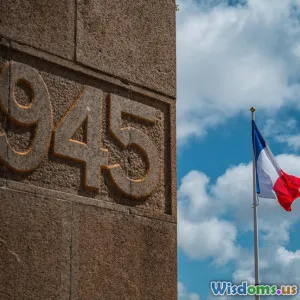
The Vatican’s Secret Archives: What Are They Hiding from the Public
9 min read Explore the mysteries behind the Vatican’s Secret Archives and what hidden truths they may conceal from the public. (0 Reviews)
The Vatican’s Secret Archives: What Are They Hiding from the Public?
The idea of secrets—ancient manuscripts, hidden knowledge, and clandestine dealings—has fascinated historians, conspiracy theorists, and curious minds worldwide. Among those cloaked in mystery stands the Vatican’s Secret Archives. Tucked away in the heart of Vatican City and guarded by the highest echelons of the Catholic Church, these archives often call to mind forbidden texts, cryptic prophetic documents, or proof of covering up monumental events.
But what exactly is the Vatican Secret Archives, and what secrets are they hiding from the public? Are they truly holding knowledge that could shake the foundations of history or religion, or is it a myth spun from secrecy and awe? This article aims to peel back the layers of secrecy and dive into what these archives consist of, their history, controversies, and what we might yet learn.
Understanding the Vatican Secret Archives
What Are the Vatican’s Secret Archives?
Contrary to popular belief, the name “Secret Archives” does not mean the contents are necessarily nefarious or conspiratorial. The term "secretum" historically translates closer to "private" or "personal." These archives are, in essence, the private archives of the Pope and the Holy See.
Established in their current form in the 17th century, the archives contain documents spanning more than 12 centuries. These include state papers, correspondence, papal account books, election documents, and reports from papal representatives.
The archive's collection includes over 85 kilometers (about 53 miles) of shelving packed with letters, account books, papal bulls, lead-sealed registers, and even texts that date back to early Christianity.
Access Restrictions and Security
Anyone expecting to stroll through the aisles of ancient manuscripts faces a tough reality. Access to the archives is strictly limited. Researchers must obtain special permission, and requests are reviewed carefully. The archive only opens a portion of its material to scholars after certain dates—usually documents older than 75 years become available.
The Vatican employs meticulous preservation techniques and security protocols to protect these artifacts. Only an elite corps of archivists works within the chambers, ensuring confidentiality and document integrity.
What Kind of Secrets Might Be Inside?
Historical Documents And Their Significance
At the heart of the archives lies a trove of primary historical documents. For example, the archives hold correspondence between Thomas Jefferson and the Vatican, letters regarding the trial of Galileo Galilei, and documents about the Inquisition. Scholars rely heavily on these materials for accurate historical research.
Among the treasures is the existence of the Codex Vaticanus, an ancient Bible manuscript dating to the 4th century, pivotal in biblical scholarship.
Theories and Speculations
The realms of fiction and conspiracy often depict the Vatican Archives as hiding explosive secrets—proof of extraterrestrial encounters, unaltered Gospel texts contradicting established Christianity, or records clarifying the fate of the Knights Templar.
One popular discussion surrounds the Third Secret of Fatima, a prophecy reportedly entrusted to the Vatican and shrouded in controversy due to its delayed and enigmatic disclosure.
Other theories speculate on the Church's knowledge of suppressed scientific claims or political manipulations throughout history.
While many theories are speculative, not all are without basis. For instance, documents related to controversial historical events, such as the Vatican’s role in World War II or dealings with controversial regimes, are part of the archives—and information about these topics remains sensitive.
Recent Transparency Efforts
Pope Francis has gradually opened some previously sealed sections, enabling scholars increased access. For example, in 2020, the Vatican granted access to the archives covering the pontificate of Pope Pius XII (1939-1958), which many hoped would provide insight into the Church’s Witness During World War II.
Such efforts indicate a shifting stance towards transparency while maintaining the protective boundaries that guard their collection.
Real Examples of Uncovered Archives
The Galileo Correspondence
Historically, the archives have produced fascinating revelations. The Vatican Secret Archives contain letters exchanged with Galileo before and after his trial for heliocentrism. These documents reveal the Church’s intricate approach to science, theology, and political pressure.
World War II Documents
After recent openings, researchers uncovered detailed records about nuncios’ communications during WWII. These documents shed light on controversial questions surrounding Vatican diplomacy and its responses to the Holocaust.
Why Does the Vatican Keep These Archives Secret?
Protecting Institutional Reputation
Certain documents could potentially cast shadows on the Church’s historical decisions, prompting them to delay release out of concern for institutional integrity.
Preservation and Confidentiality
Archivists also cite the necessity of preserving fragile materials. Furthermore, some records reference confidential correspondence or matters of Church governance that still bear relevance.
Routinely Secret but Public-Oriented
Importantly, not every document is an earth-shattering secret. Many are routine communications. Yet, sensationalism often causes exaggeration, blurring public perception.
Conclusion: Between Myth and Reality
The Vatican Secret Archives constitute one of the most significant and mysterious collections of historical documents globally. They hold invaluable artifacts and records crucial to understanding Christian history, papal diplomacy, and broader geopolitical interactions.
While myths about conspiracy proliferate, the archives mostly safeguard sensitive religious and diplomatic documents that the Church protects due to privacy, security, and preservation needs.
Increased academic access and digitization efforts promise exciting developments for historians and the curious alike. The allure of what mysteries lurk between their walls continues to captivate us, but it is the respect for centuries of human history and faith which remains at the archives’ core.
Takeaway
Far from being a vault of dark secrets, the Vatican Secret Archives are a vital historical repository whose controlled unveiling enriches global knowledge—offering potent lessons about truth, power, and transparency in an era craving both revelation and respect for context.
Curious readers are encouraged to explore recent scholarly works based on archive access and await future document releases that will further illuminate the intriguing narrative woven within these sacred halls.
References
- Inside the Archives of the Vatican by Antonio Ferrua, The Atlantic, 2019
- Vatican Secret Archives official website
- The Vatican and the Holocaust research consortium documents
- Galileo’s Trial papers in the Vatican archives
- Pope Francis access reforms announcements, 2020
Rate the Post
User Reviews
Popular Posts





















